#12 - Unlimited Saga
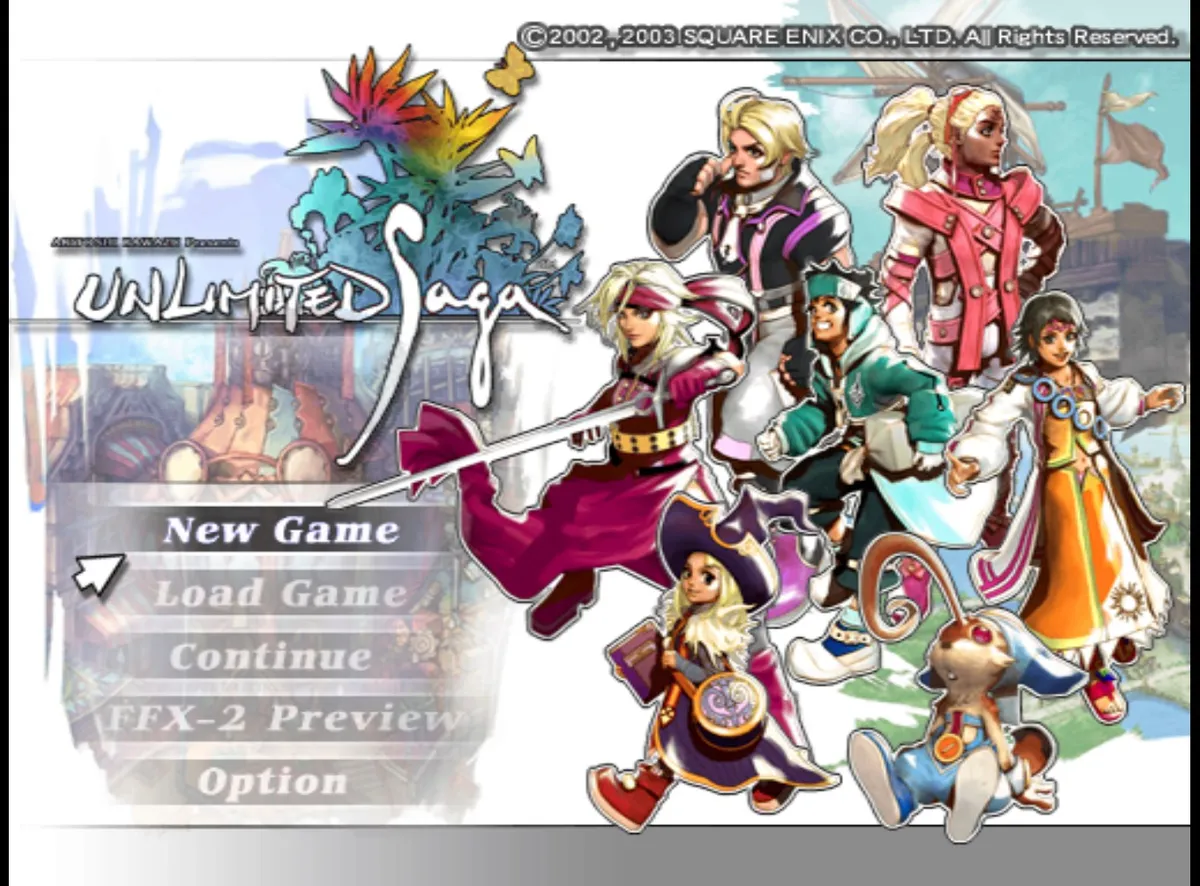
Unlimited SaGa. (Note: I've seen the box art go with 'Saga' rather than 'SaGa' although the soundtrack art appears to use SaGa, so I'll just be sticking with SaGa. It's a SaGa game, damn it...!)
This'll be a bit different than some previous pieces since for once this is a game I streamed to completion--well, on one character, at least, though I'll be back for more in the future. It was a blind run, no looking up info, chatters knew not to spoil stuff, et cetera et cetera. I had entirely too much time to ruminate out loud about Unlimited SaGa's mechanics and really think about them while streaming it so this is probably going (This'll require a fair bit of game systems chatter, so I apologize in advance. Unless you enjoy that sort of thing????)
Unlimited SaGa's a game I've heard a lot about and never played until this year. Most of the things I heard were, to be honest, not the kindest but probably mostly came from people who never gave it a fair shot in the first place. Or were just parroting things they heard online. It was unfair. It was bullshit. It was impossible. It made no sense. The game was impossible to figure out. It was bad, garbage, every other negative term under the sun. Frankly, the nicest thing I heard was that the normal battle theme kicked a ton of ass, which is the only thing from all those statements I will say is 100% correct. No, seriously, please give it a listen if you haven't played the game.
And so, I picked the game up a little uneasily, not sure what I'd think about it.
Earlier in 2025 I came out as trans1. This isn't about that, per se, but I'll admit that a part of me found it deeply funny to go from experiencing some very large degree of anxiety over that and pivoting into 'okay but I want to stream Unlimited SaGa as my first ever stream game'. The human mind is powerful and works in mysterious ways. The first VOD is tragically lost to time because I was a fool and didn't know that you had to enable VODs, but it was only a couple hours of the start of Ruby's story anyway, so no big deal. Sort of. Okay, I'm actually deeply annoyed about that, but what's done is done...
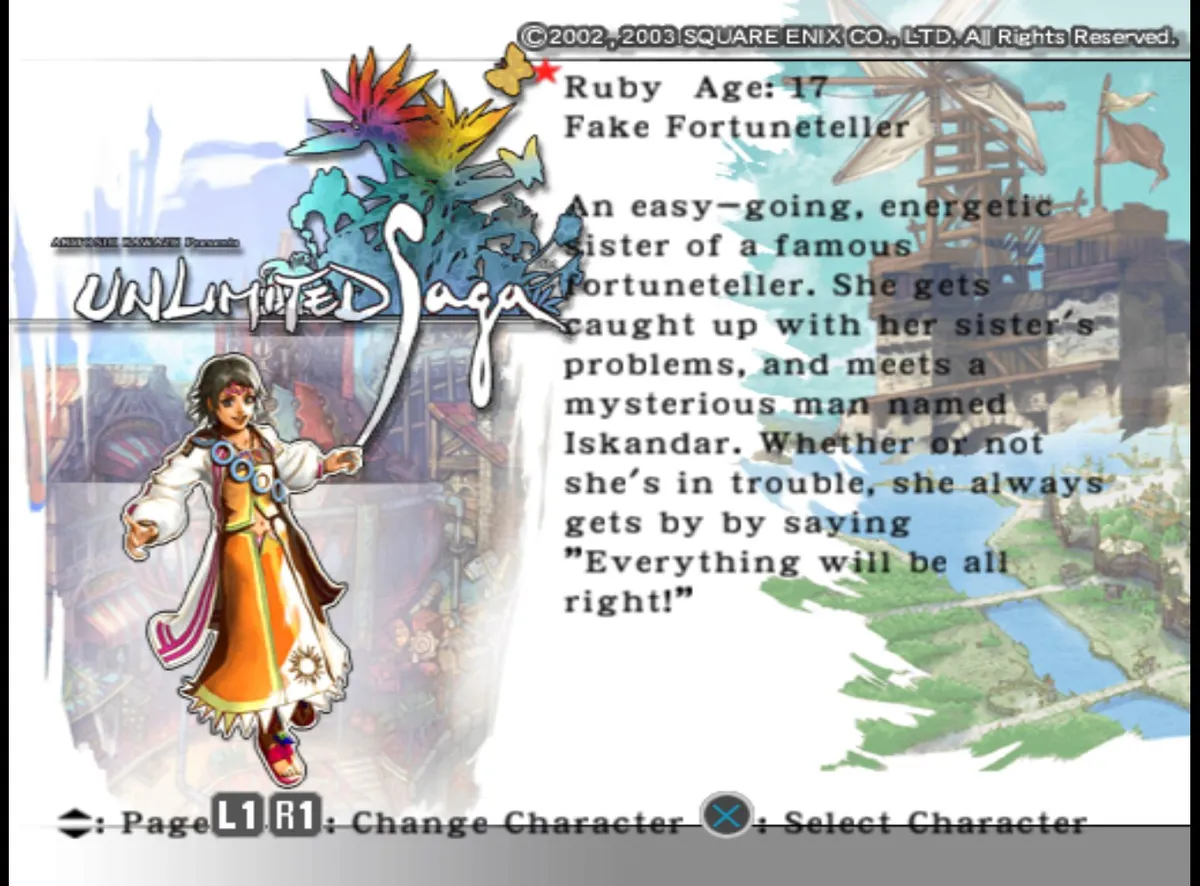
I went with Ruby as my protagonist. One of the only things I had been told was to avoid Laura and Armic, and Ruby's one of the few other girls so I just picked her on a whim. Her story focuses on seven dungeons known as the Seven Wonders, and as I learned later, is one of the longer stories and thus one of the ones you're likely to end up pretty strong in. This probably helped me?? Maybe??
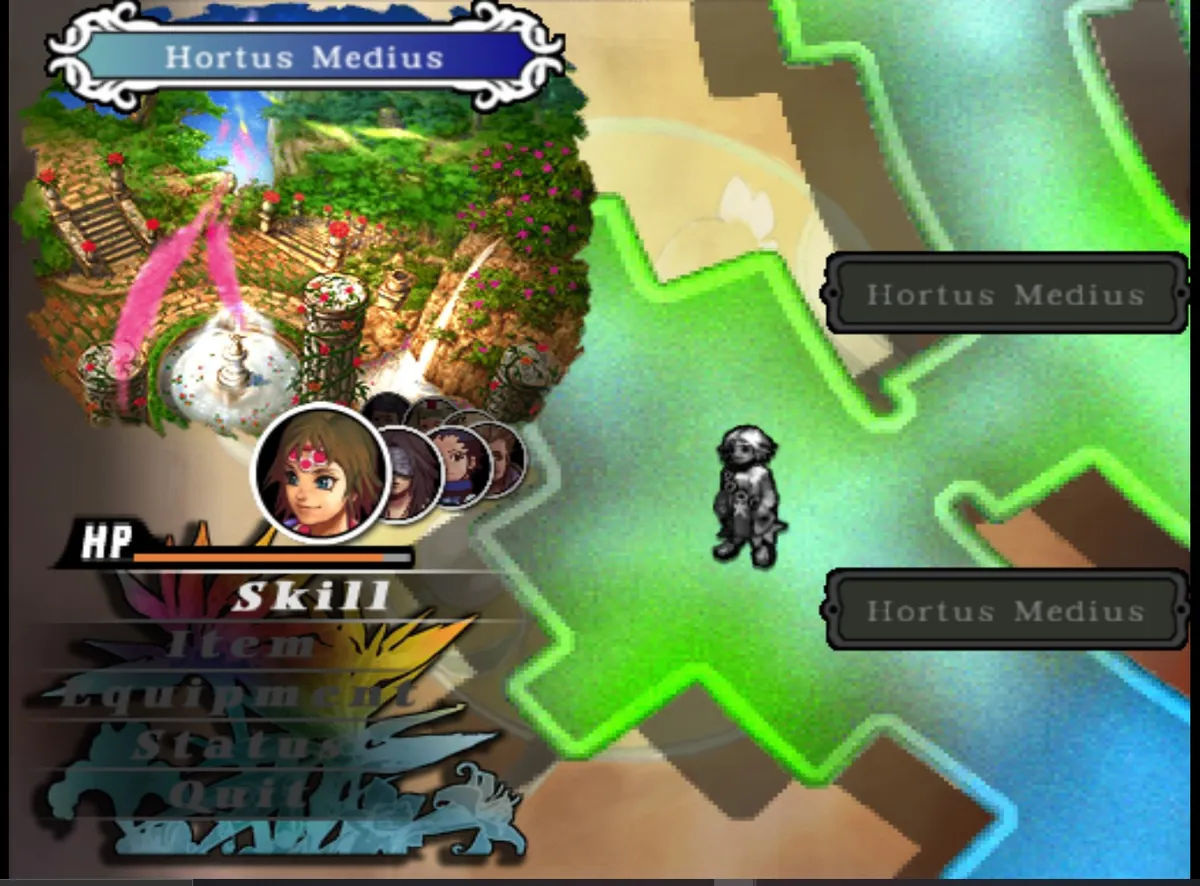
Unlimited SaGa's dungeons feel more like a TTRPG rather than anything. Your party is represented by a single piece that produces a very delightfully chunky sound effect whenever you move by holding the analog stick in a valid direction, and dungeons are full of traps, enemies, chests, and sometimes various objects you can fiddle with for the sake of puzzles and such.
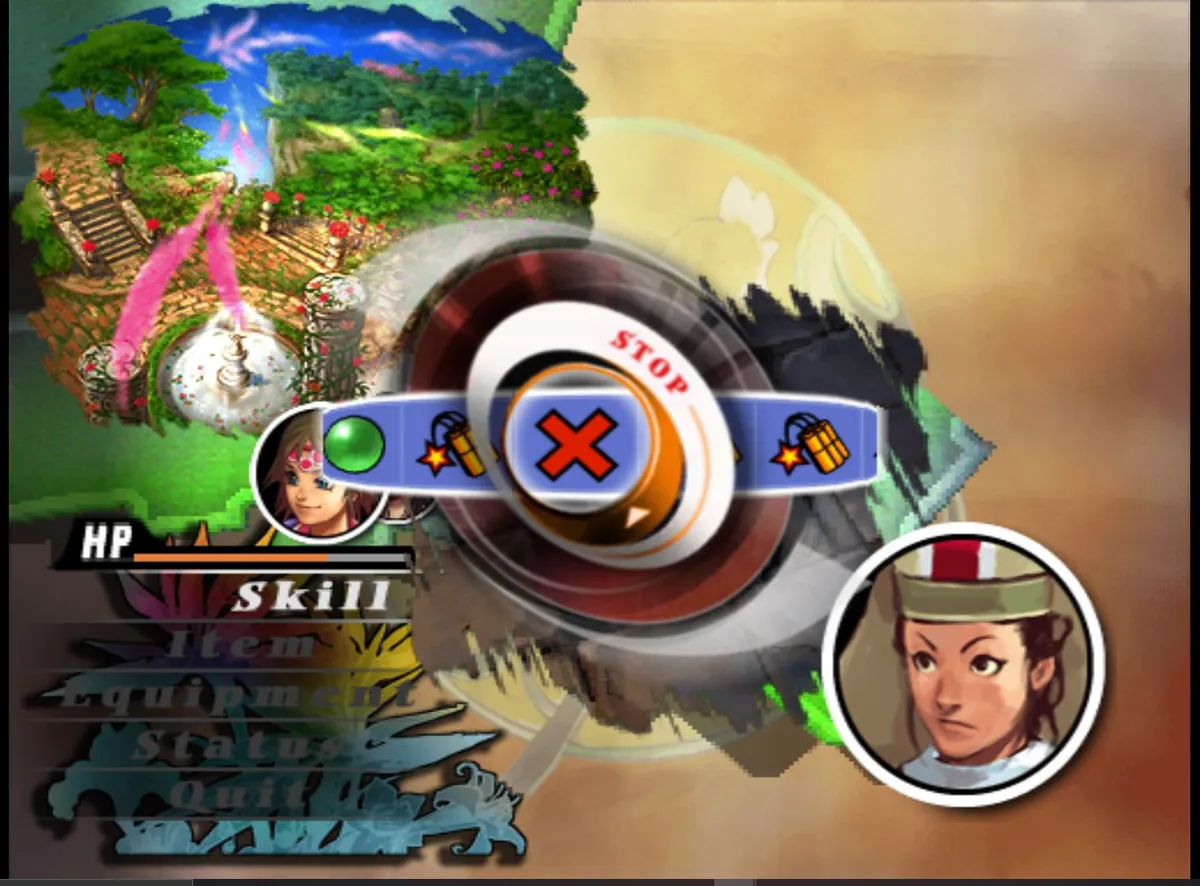
If you've heard a bit about Unlimited SaGa, you might know about the reels. If not... well, welcome. You'll be seeing these reels a lot, constantly, in every single dungeon. When a trap is triggered, a randomly chosen character has to spin the reels to see what happens. The green orb is a pass, meaning the trap doesn't do anything, whereas the X and dynamite are both failures that result in them taking HP and even LP damage. I've been informed each slot on the reels is a 3 frame window to select, and more importantly than that, reels spun in a dungeon (not in combat!) are apparently subject to some kind of slipping effect meaning that it may not stop where you hit the button--this can be good or bad, obviously, depending on what your timing was like, but certainly frustrating if your timing was initially good.
If you're familiar with other SaGa games, taking LP damage from a random trap that is slightly subject to RNG in terms of stopping the reel might sound miserable2. It sort of... is and isn't? LP in this works a bit differently. All attacks can hit both HP and LP, with LP damage increasing in frequency as the target's HP goes down. Some weapon types are better at LP damage, too, like daggers and bows. Enemies and party members are subject to this rule, and since inactive party members do regenerate HP and you can actually bring more than 5 people into a fight, rotating people around slightly can help mitigate any incidental LP damage from enemies.
Of course, after completing an adventure (meaning, any dungeon tied to the main story or a sidequest) everyone's LP comes back, even if they dropped to 0 LP, as long as it wasn't your chosen protagonist since 0 LP on them is a game over. So, as long as your big damage dealers aren't perilously low on LP by the time you get to any serious fights in an adventure, it's not so bad. This leads to a funny effect in lower stress areas where it's not uncommon to just have 0 HP people going all out because you're not worried about the LP damage, or when a boss fight starts going badly or starts breaking out AOE attacks on you so you start having single party members steal the spotlight, taking 4-5 actions in a single round and letting them go out in one final blaze of glory.
Honestly, if you've played SaGa Emerald Beyond, that last part feels just a little bit like how Showstoppers work there.3
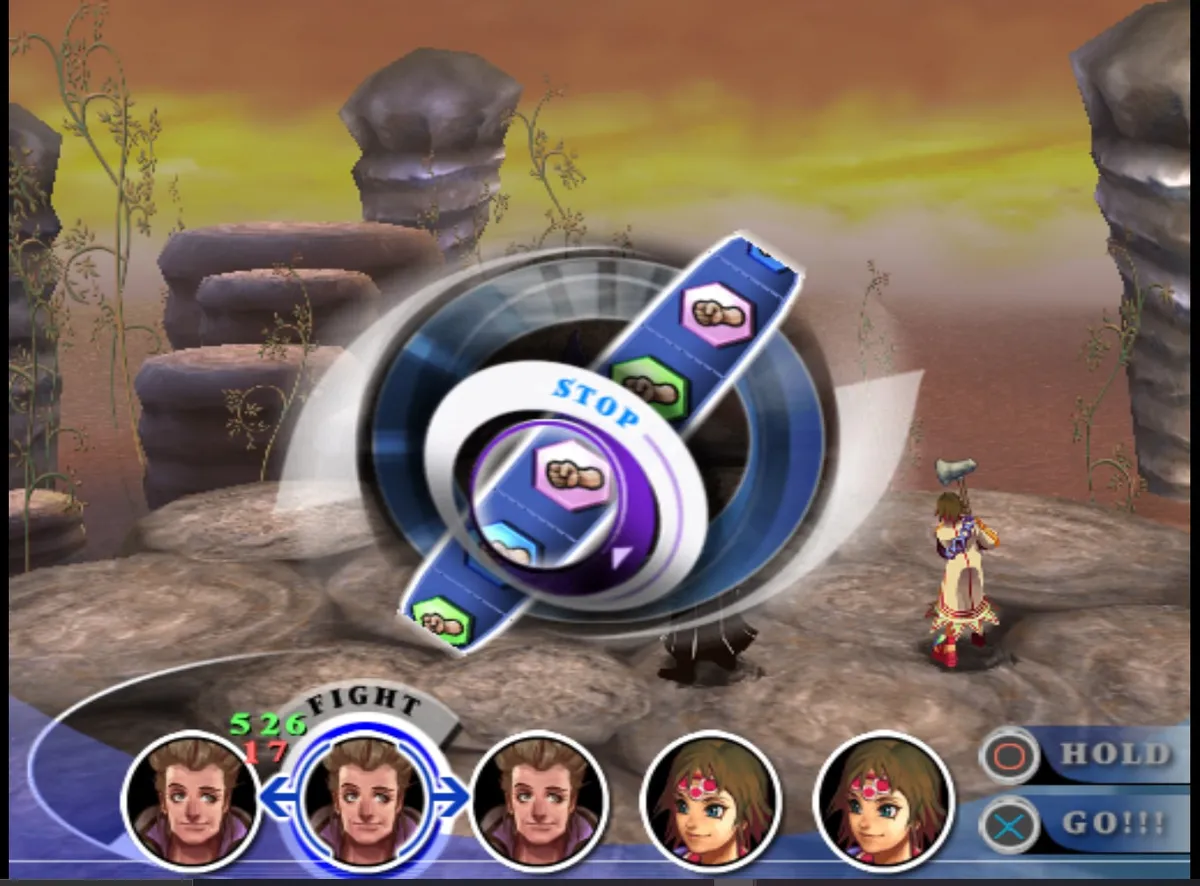
So, yes--single party members can take multiple actions in a turn. It's pretty cool and adds a lot of extra decision making. Maybe your people with heavy HP damage weapons have weakened a target enough that it's time for the archers and dagger users to come out and steal the show, or maybe you just really want someone to try and spark a new tech. There's other considerations too, like whoever has their action picked first ends up in front of the formation and is more likely to be hit--but, since you can make party members take their turn in any order independently of the order you initially put in their commands, you can have the healthier people input their turns first but when the round starts you actually have the rest of the party take their actions first, if you like.
There's an extra fun layer of perversion to this due to how combos work. You can either fire off commands right away via the reels or 'hold' them for a combo. If the enemy was about to take an action, they'll interrupt the combo and will also deal bonus damage. But otherwise, you can keep 'holding' actions and let multiple party members all take part in a big combo, dealing some pretty horrendous damage. However, individual actions do have action speed, so it's possible to make someone take an extremely slow action like casting a spell as the first command in a turn, which will oftentimes be so slow that the enemy might expend all or most of their actions after the spell goes off, and then you can safely set up for a big combo with the remainder of your party. I did this a whoooooole bunch, and it's honestly pretty effective for some fights. Combos are strong!
This isn't even getting to just using the battle reels themselves. At the start of the game they're just full of green panels since you haven't sparked anything, but as you spark new things they'll get added in so you'll start seeing blue, pink, and orange panels that correspond to stronger and stronger techs. Unlike some other SaGa games which utilize a WP pool or similar for weapon techs, weapons here instead have up to 4 base abilities at a time (note that there are more than 4 in total, but any given weapon can only have 4 at a time) that can each spark their own set of techs. On an Axe, the basic attack Woodchopper eventually learns Phoenix Blow as a level 4 tech, while Time Lapse leads to Reverse Delta. Sometimes they can share level 2 or level 3 techs, but from what I saw the level 4s tend to be unique and are pretty strong! Either way, the further your characters develop, the easier the attack reels are to hit as more and more of the green panels get replaced by other things, so even if you miss with a level 4 tech you're probably still landing on a level 2 or 3 anyway.
That's enough about combat for now. Sorry. There's a lot to say there and it's actually fun to think about how it all comes together...
Anyway, the dungeon crawling is something you'll be doing a lot of in Unlimited SaGa. Every adventure or side quest involves having to navigate through an area. It can be an ancient tomb, it can be one of the seven wonders like the Undercity Pharos (very bad place, would recommend not going here), it could even just be a long and sprawling highway path. Monsters infest these areas and can patrol around--sometimes they may get the jump on you, others will sometimes just hang out, and then there's traps and chests and stuff.
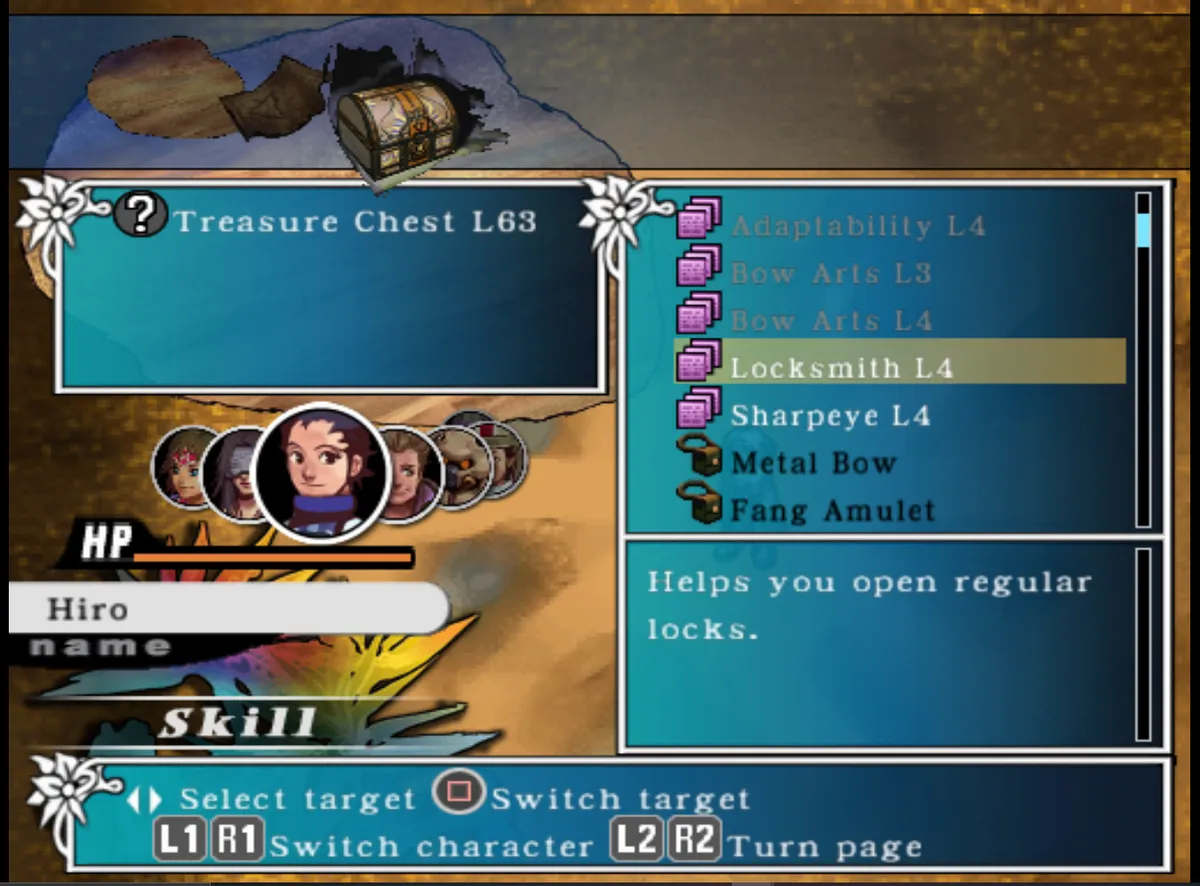
The chests are "fun". Most are locked, most are also trapped. If you've played stuff like Wizardry, you might be familiar with this process, although it's honestly a bit torturous here. First someone with the defuse skill panel has to defuse the traps. This uses the reels--yes, failing these sets the traps off. While a needle trap is a bit of a joke, poison gas hurts and inflicts poison that persists into the next few fights, explosive traps hurt a lot and I think might even be able to destroy the contents, and so on and so forth. But then if you succeed at that, you have to lockpick it. This also uses the reels. Failing does nothing but waste a turn, during which monsters might find you and attack you.
I just want to note that sidequests generally have a turn limit before you're forced to return to town and will have to restart them (you do keep your map progress, thankfully). Wasting a turn kinda sucks!
It's funny the first few times--I cracked up on stream as one chest I blindly opened had like 2 or 3 different traps before revealing it was also a mimic and then kicking my ass since it was the start of the game. It does get really annoying as you have to do the defuse/lockpick dance with every single chest though since the vast majority are both trapped and locked. This is also assuming you even have someone with defuse or lockpick... I didn't even see a defuse skill panel until halfway through Ruby's story.
You can, uh, punch chests too. But it might break the contents. And you still have to spin the reels to successfully punch them open.
Anyway, most dungeons generally have a defined endpoint. For the Seven Wonders, at least in Ruby's scenario since I have no idea if they work the same when other characters visit them, they generally have a very clear checkpoint near the end and then end with a boss fight. Other sidequests might just involve hunting down certain objects in a wider, more open map, and then having to return to the start of the area before time runs out. Others just involve exploring a dungeon, solving puzzles along the way and there might be some nice treasure chests at the end and a boss to fight.
Some dungeons can have truly painful layouts relative to how much time the sidequest offers, making it feel like you "need" a second attempt to really have a good chance at completing it. Main story stuff isn't subject to those time limits, thankfully. Since you can pass a turn in a dungeon to heal the party, sidequests are generally much more painful since you may find yourself forced to skip out on doing that in order to meet the time limit, but during the main story it's pretty safe to do. You might get into some extra fights as a result so you'll need to be careful if any weapons are near breaking, but that's all.
Let's talk about skill panels. They're cool. They suck. I love them and I hate them.
Unlike other SaGa games which have had their own ways of making stats go up (just by plain fighting, shoving drugs down humans' throats, equipping stuff on a mech, etc) the primary way here is with skill panels.
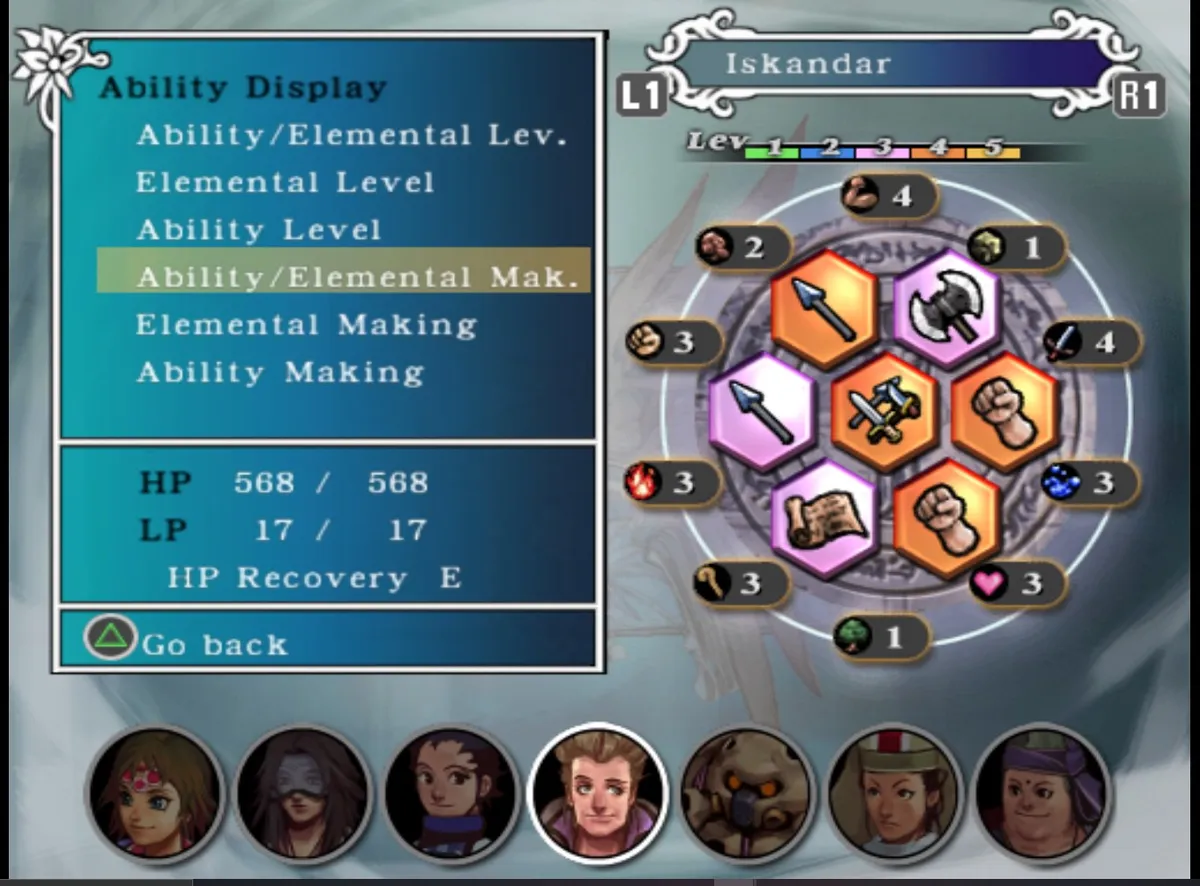
Everyone comes with their own set of panels by default. The above picture is my Iskandar from extremely late into the game. There are skill panels for all kinds of things--magical familiars that give access to using magic without needing specialized elemental tools, weapon panels that increase spark rate and improve your combat reels for that weapon type, lockpicking, defusing traps, exploration-based ones that assist with mapping, and so on and so forth. The placement in this grid, and even things like if they're adjacent to ones with matching icons, affect your stats. Each part of the grid corresponds to a stat, so for example placing Axe Arts in the top right panel results in a hefty STR gain, though this is somewhat modified by a character's affinity for that stat, which the game does tell you albeit with the odd phrasing of calling it their 'making' for a given stat rather than any clearer term.
Anyway, the real catch is that when you don't know what you're doing, skill panels feel entirely random. Sometimes you just complete an adventure and someone gets a crap selection of panels, and you have to take one. You can't just opt not to. Oftentimes everyone will just have one dead slot where you just kind of sigh and rotate in bad stuff while waiting for upgrades to one of their other slots. In reality, and I didn't know this while playing, apparently the skill panels you get are both based on the character's actions taken since the last time they got a new skill panel, as well as stuff like how many fights you got into and what monster rank were those fights. So, fight more stuff, do a lot of actions with the weapon you want panels with, and your odds go up. And as the game goes on, the monster rank should increase, so higher level panels will become more likely too.
Of course, even if you use something a lot, it doesn't guarantee it'll show up as an option, so... yeah. With my playthrough in particular I ended up shuffling weapon types a couple of times and it was a bit of a hassle waiting for the right panels to show up. Kongming ended up being a huge asset as an archer, but boy, he sure didn't want to get that first copy of Bow Arts. And let's not even talk about how Iskandar just refused to get a level 4 Axe panel so his level 4 techs were consistently literally twice as hard to hit compared to Ruby. And then how I kept swapping Hiro's weapon types around due to indecisiveness... fun times.
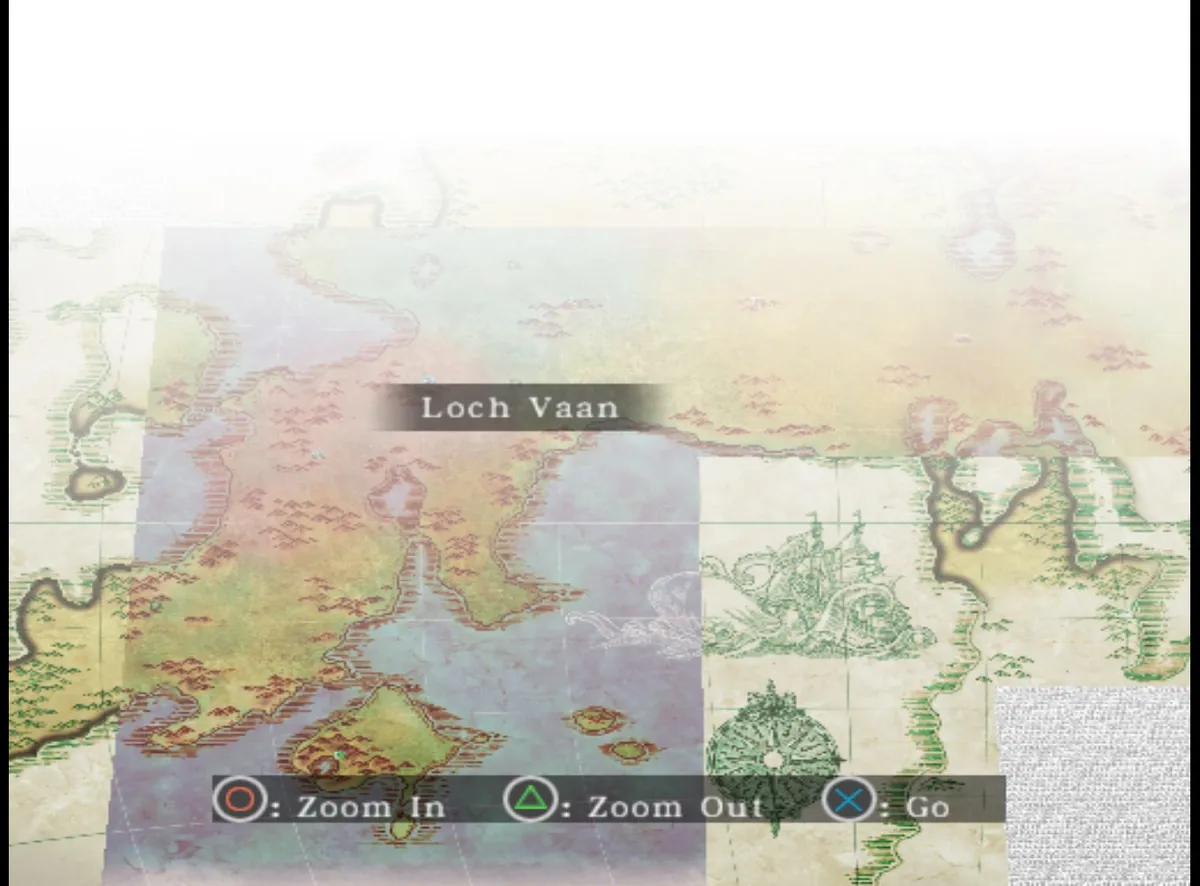
The structure of Ruby's story is a bit funny to me. I'm not sure how the other stories are structured just yet, but at least in her case, this is not like certain other SaGa games where you can just go track down various party members early on and have them join you, and maybe replace them later on once you get access to more people you like. It's instead pretty constrained by story progress. Ruby starts with Hiro, one of her close buddies who is thankfully pretty good at just hitting things in fights. You quickly get Iskandar whose martial stats can be mostly defined as 'yes' and whose HP is also 'yes' and he's your best buddy the entire game despite raising numerous questions as you see the town of Iskandaria and get flashbacks of another Iskandar (or other Iskandars...?) later in the story. But none of that matters because he's really, really strong, okay? And then you get Ruby's sister, Sapphire, who generally leans towards magic but... er... well. Confession time.
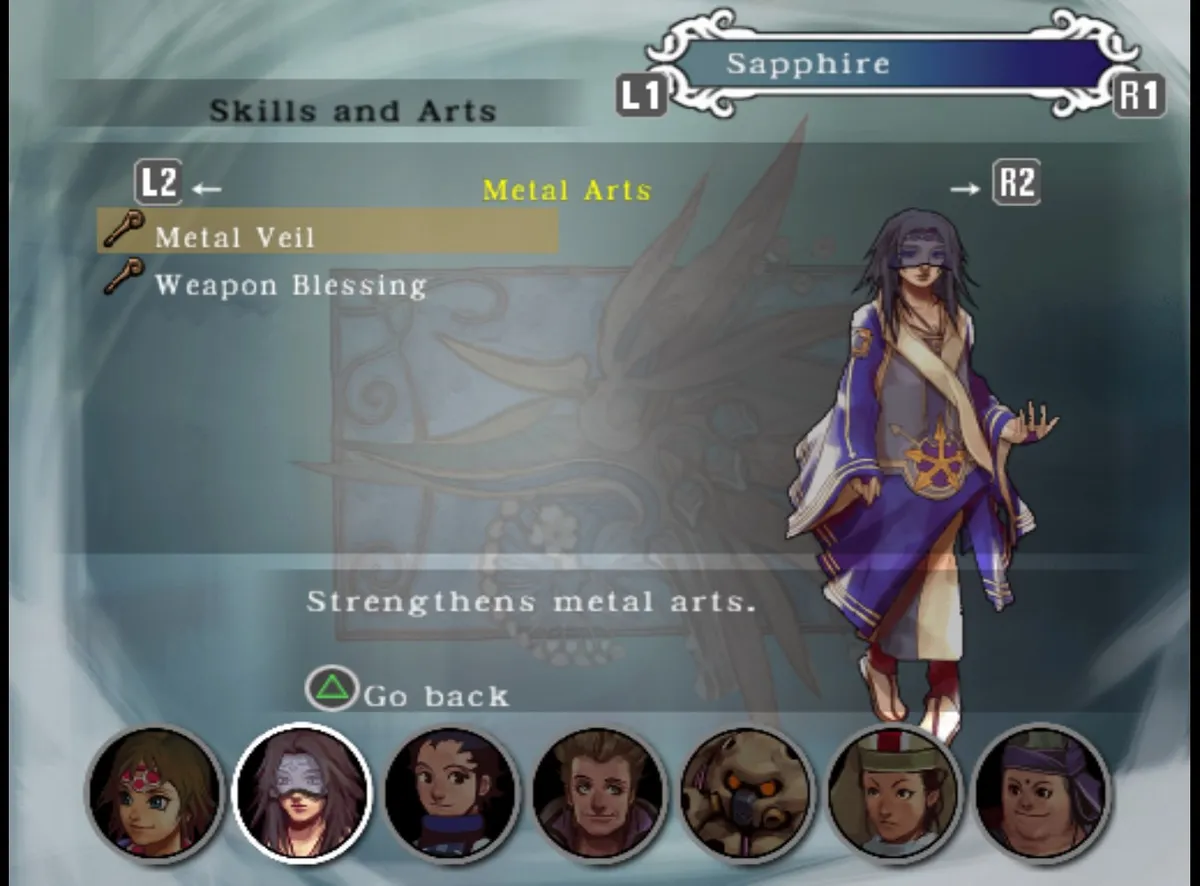
I didn't really figure out how the hell magic works for like half the game??? Some characters come with magic and can cast it as long as they have a tool with the appropriate Element Arts ability on it, but otherwise, equipping an
Magic's useful though! Purify, a water art, heals some bad status ailments and also does some big healing, AOE offensive magic is very good since Unlimited SaGa is a game where AOE options are uncommon but good for certain fights, and also magic is an incredibly slow action so it's good for manipulating turn order. It's just that... well, Sapphire might have spent half the game basically not used. Whoops. And even then, she has one of the worst LP pools in the game, so even though I eventually did start using magic... well. She had a rough time. Sorry, Sapphire.
For Ruby's story she gets the remainder of her party members as she goes to the seven wonders, and they're a fairly eclectic mix--most of them generally aren't major damage dealers, some come with truly horrible stats (hi, Mythe!), but due to how the game's combat works, even a second stringer is good for taking hits and can even come in to deal some LP damage once an enemy is sufficiently weakened. Mythe is a notable exception to this because his LP is bad and he joins during the Undercity Pharos with a charmingly miserable 90 HP which is under half as much as any of your other party members at that point, leading to a lot of fairly tame attacks still chunking him for 2-3 LP damage at a time, and also the Undercity Pharos is kind of a pain to navigate which isn't actually his fault but I can only ever associate him with that dungeon now. Sorry, Mythe.
Due to how character progression works, the later someone joins has a bit of a knock-on effect with skill panels. You have less time to do adventures with them unless you're knocking out a lot of sidequests, so their skill panels are worse, and they need to spark stuff from scratch. Consequently, they'll always be a bit weaker than your main team, so you'll use them less, leading to less changes to spark things, probably resulting in worse skill panels and HP gains too.... I'm not 100% certain on that, but I do believe battle participation for HP gains needs them to actually be used for at least a turn rather than just existing in the party.
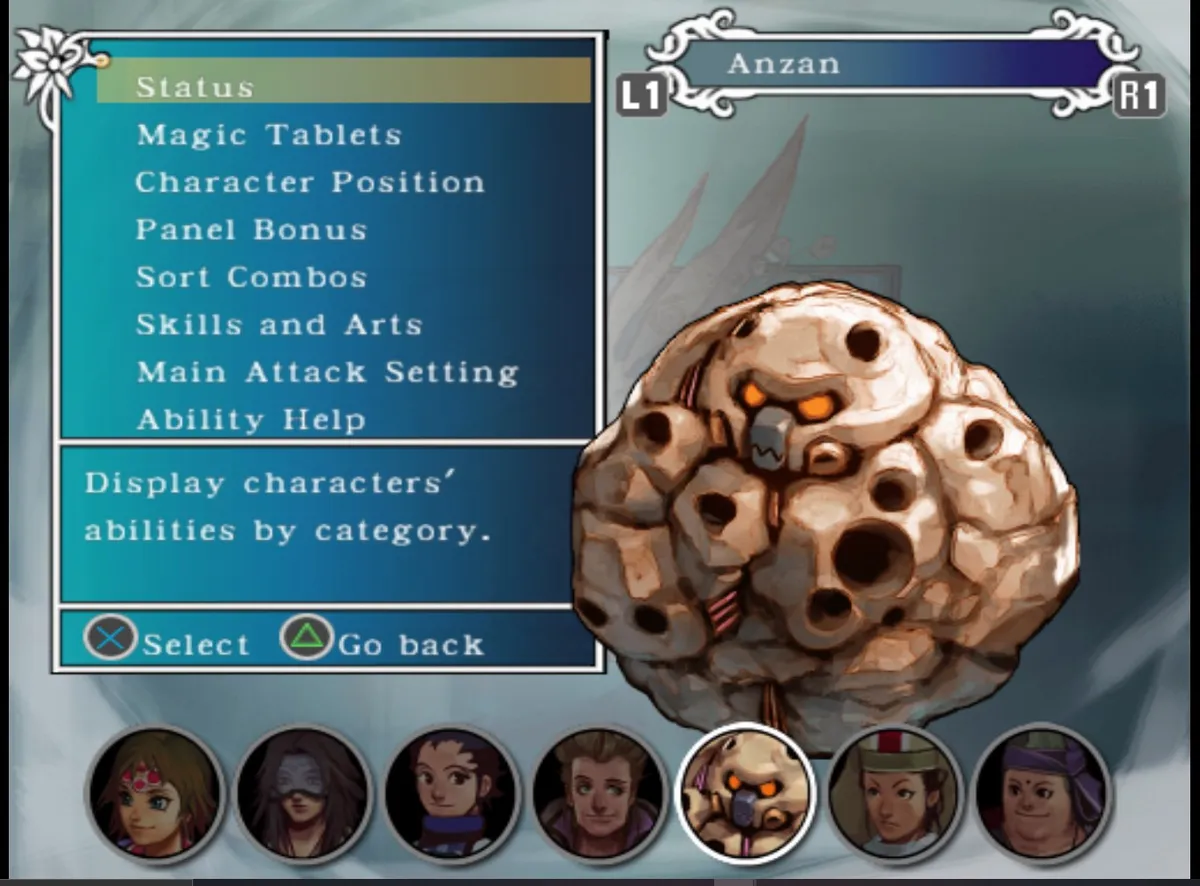
I sort of ended up liking this? Ruby, Hiro, Iskandar formed a core team of people who could take hits real well, dish out some serious pain especially since I gave both Ruby and Iskandar axes, but mostly everyone else saw good use. Anzan, who I mostly just think of as 'wow, cool rock guy' comes with an impressive defensive profile and magic access, meaning he's great as a tank and you can do the aforementioned gambit of just having someone sit in front casting magic so the enemy burns all their actions and then you retaliate with a big combo on your turn.
Roy, who's at the very bottom right of the above screenshot, is generally beefy and has superb LP so as long as you give him a good weapon he can contribute perfectly okay damage while surviving for days. Kongming (the second to last character in the above screenshot) has great skill growth despite looking like a pure mage so he's a fantastic archer who can easily pull his weight. I'm sure if you do enough sidequest grinding near the end of the game you can homogenize the party a fair bit and get everyone up to relative parity, but I actually really liked having a clear A Team/B Team situation where the B Team was every bit as valuable to spread incoming damage or just chipping in their own damage.
Hell, Anzan stole the last hit on the last boss with a Trick Shot that did 1 LP damage. Despite being one of the absolute last joiners due to the order I did Ruby's dungeons in, Kongming also did a horrendous amount of LP damage both against the last boss and against the lead-in fight to it that called for some massive AOE firepower which he was able to provide thanks to giving him bows.
Did you know bows are pretty good in this game? No, really, go try Random Arrowshot out when you need to hit multiple enemies.
All of this said, having heard so little about Unlimited SaGa other than 'blah blah it's hard and bullshit and bad' going into it convinced me I was going to completely bomb out on the last boss, get stonewalled, have to abandon the run because there'd be no way to fix my party or something like that, etcetc, any number of unfortunate things. I was 100% prepared for this and basically assumed it was a sure thing, and hey, second time around I'd start to read some mechanics guides to better understand some things. This feeling got reinforced the more I got some of those new party members joining with anywhere from 50 to 75% less HP than the main party, and also realizing halfway into the game that I just didn't have enough LP damage dealers which was making fights last longer than they needed to...
Then there's the entire blacksmithing system which left me feeling even more concerned. It's... a lot. I'll attempt to sum it up.
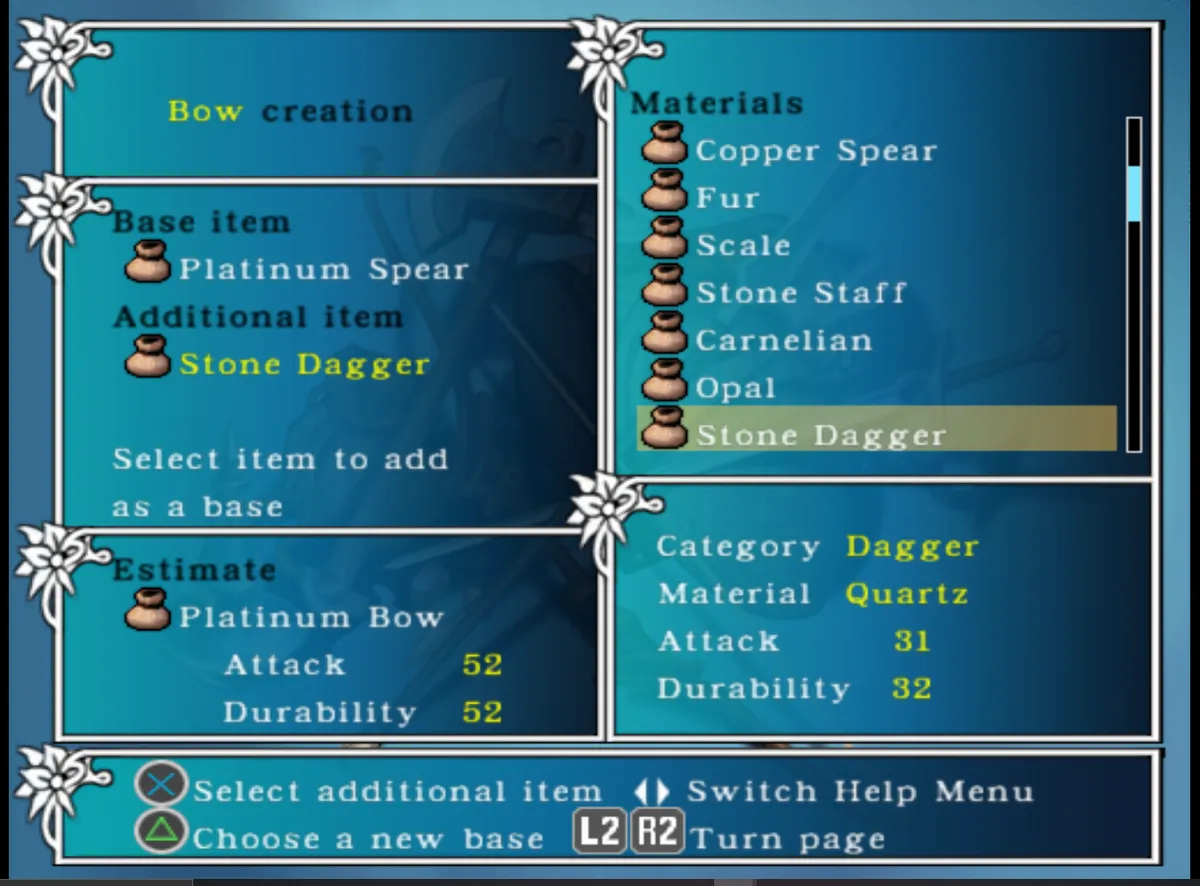
Certain towns have blacksmiths. Certain blacksmiths work on certain types of weapons only. Once you choose a weapon class, you can either make a brand new weapon of that class by just fusing certain base materials (which can include already existing weapons, meaning you could turn a weapon into another weapon) with a secondary material, or just slam materials into an existing weapon to repair it. What isn't clearly explained is that certain materials can result in special results at a certain low chance. This can get messy--for example, there's two types of 'steel' in the game where one noticeably has a single less point of attack than the other, and it is this type of steel that you need to make one of the strongest types of weapons in the game, but only if you know the other exact specific thing you need to fuse it with. ... There are some more normal material combos too, to be clear, so it's not all weird RNG stuff.
The UI for this is a huge pain since you have to unequip the weapons, go to the blacksmith, choose the weapon type, scroll to the weapon, scroll to a mat to repair it, hope the blacksmith doesn't screw up and cause one of the weapon's abilities to disappear(!!!), and then repeat this a couple of times for every single weapon you're repairing.
Remember what I said about trapped chests being kind of funny the first few times and then kind of a drag as you keep having to deal with them? ... Yeah, it's kind of the same thing here.
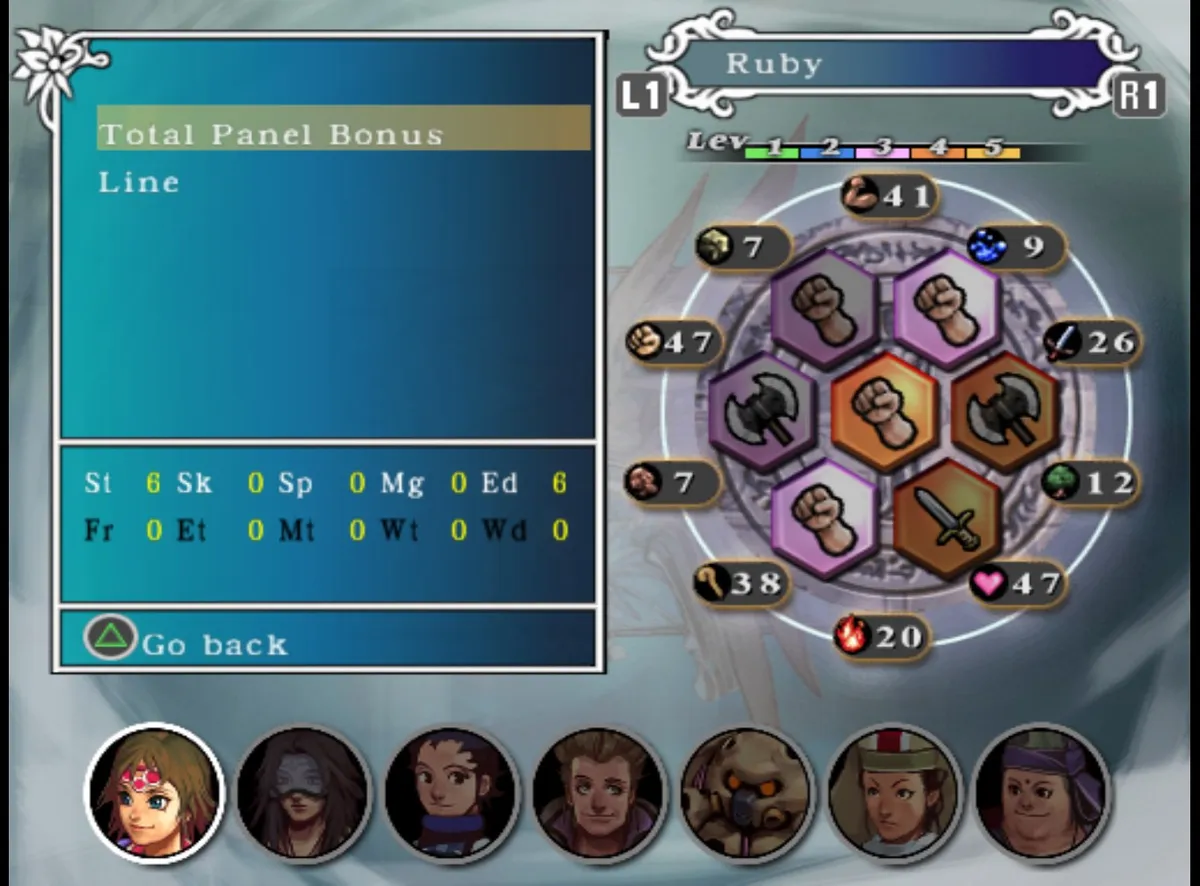
Now that I've got done complaining about one of the worst parts of the game (the inventory management sucks real bad too but I'm going to stop myself from devoting any time to that) and I've finished talking about how everything is kind of weird, oftentimes a pain in the ass with all the trapped chests and trap reels and blacksmithing and blah blah blah, I am forced to admit one thing.
I really goddamn love this game. It was 5 or 6 streams to finish Ruby's story, but between streams most of my free time was spent looking forward to when I'd be able to go live again to play more of it. Or just making notes of some things I (thought) I figured out regarding the game systems. Yeah sure, blacksmithing sucks, the inventory is a pain and you can only sort it in a dungeon for some reason, and there's a lot of stuff I just had to work out via intuition (read: blind, vaguely educated guesses), but.... it was really fun??? There was a lot of 'how does this work? maybe it's this way... or this way... or that way...' and general mucking about and slowly figuring out things as I went along. Akitoshi Kawazu invited me on his fun little TTRPG romp where there was no rulebook provided and it was the time of my life.
I don't want to explain the last boss in any detail because it's cool and better off just experienced (or go look up a video), but it was genuinely intense as hell and timing the reels was putting me massively on edge for it because I was getting unbelievably nervous as the fight dragged on and my party members started hitting 0 LP. It takes a lot for a turn-based RPG to get me that stressed out during a boss, honestly.
Anyway! I really like Unlimited SaGa! While I won't be so bold as to suggest that you should play it completely blind--I've done some searching now that I've finished Ruby's story and there's definitely some very nice spoiler-lite 'here's cool stuff to know' guides out there--I think it's genuinely a really fun experience if you're willing to meet a game on its own terms and can endure some occasional mysteries with how the game functions, and don't mind just trying to intuit things for yourself.
The soundtrack's amazing, too. At least go listen to that...!!!
okay, if you must know, it was specifically while playing Lagoon for the Sharp X68000. I'm just putting it in text here because that is the funniest timing possible and everyone is correct when they rib me about it. you have permission. it's fine. it's funny.↩
if you're not familiar with SaGa, LP are Life Points. their mechanics can vary by the game--sometimes 0 LP is permadeath, meaning that character is gone for good! in other games like Scarlet Grace, they just are forcibly benched for several fights while they recover. some games let you use them like actual resources on occasion--SaGa Frontier 2 lets characters burn a point of LP to fully heal themselves, which is exactly as strong as it sounds when the alternative is 'they go down and start taking LP damage anyway'.↩
in Emerald Beyond, showstoppers can activate when a single party member or enemy is taking an action while relatively isolated in the action queue--usually as a result of too many people being dead. when they activate, the person activating it will dump that entire turn's worth of Battle Points (the game's equivalent of WP, AKA, the resource you use to use techs) into using a ton of techs in a single round. this is generally absurdly lethal and can let you turn a losing fight around, or more worryingly, can lead to a crushing defeat if a boss performs one.↩